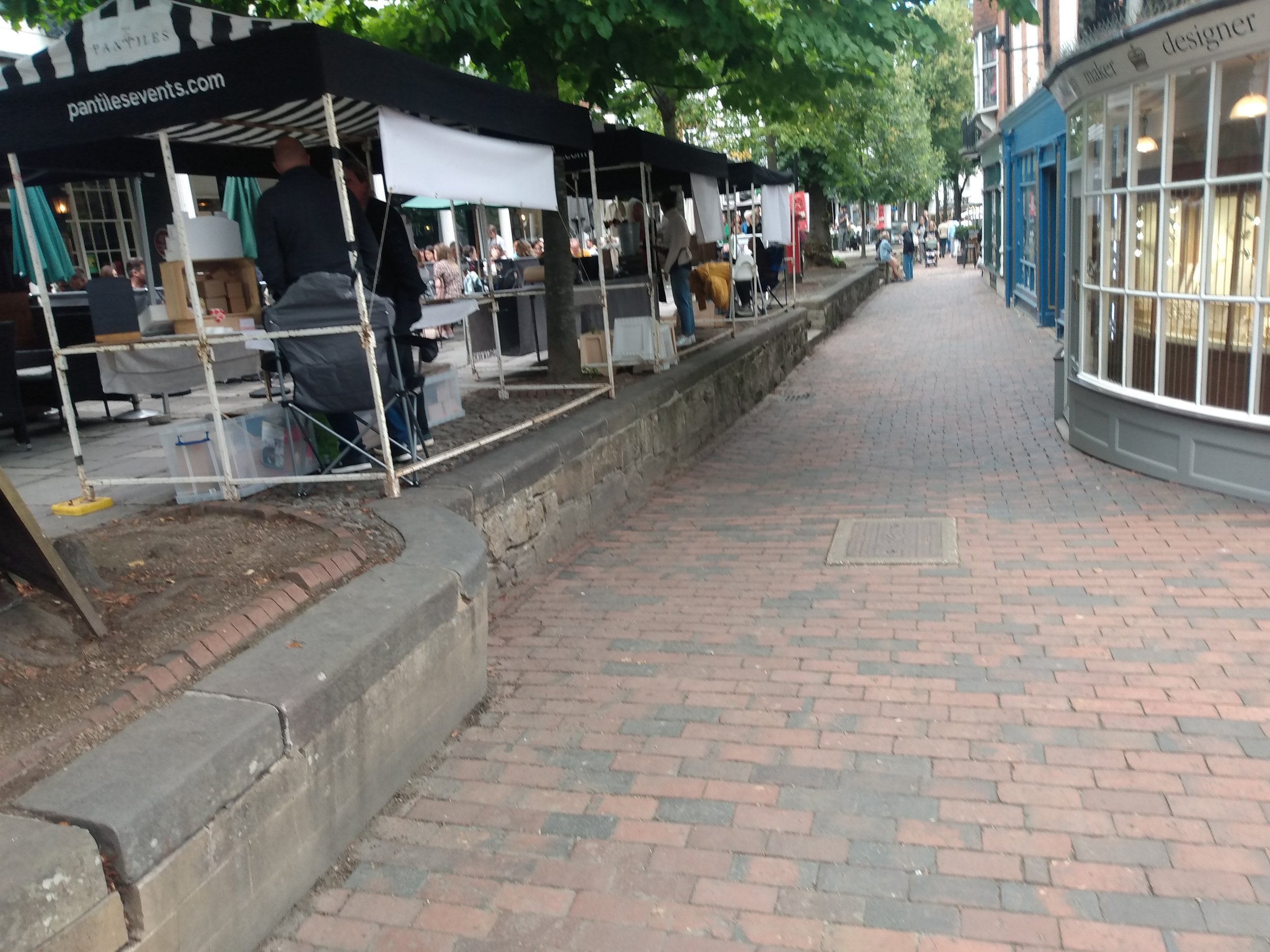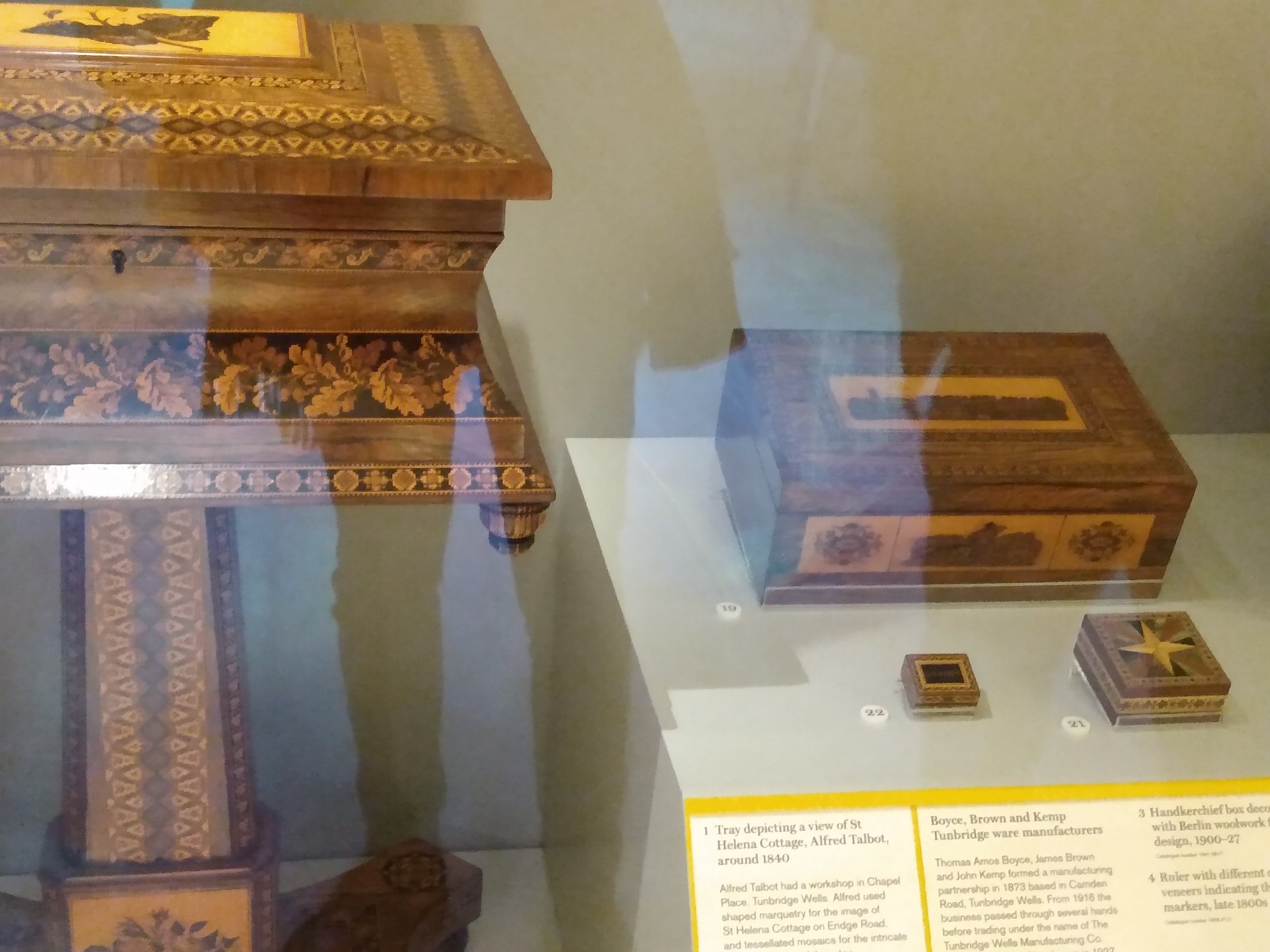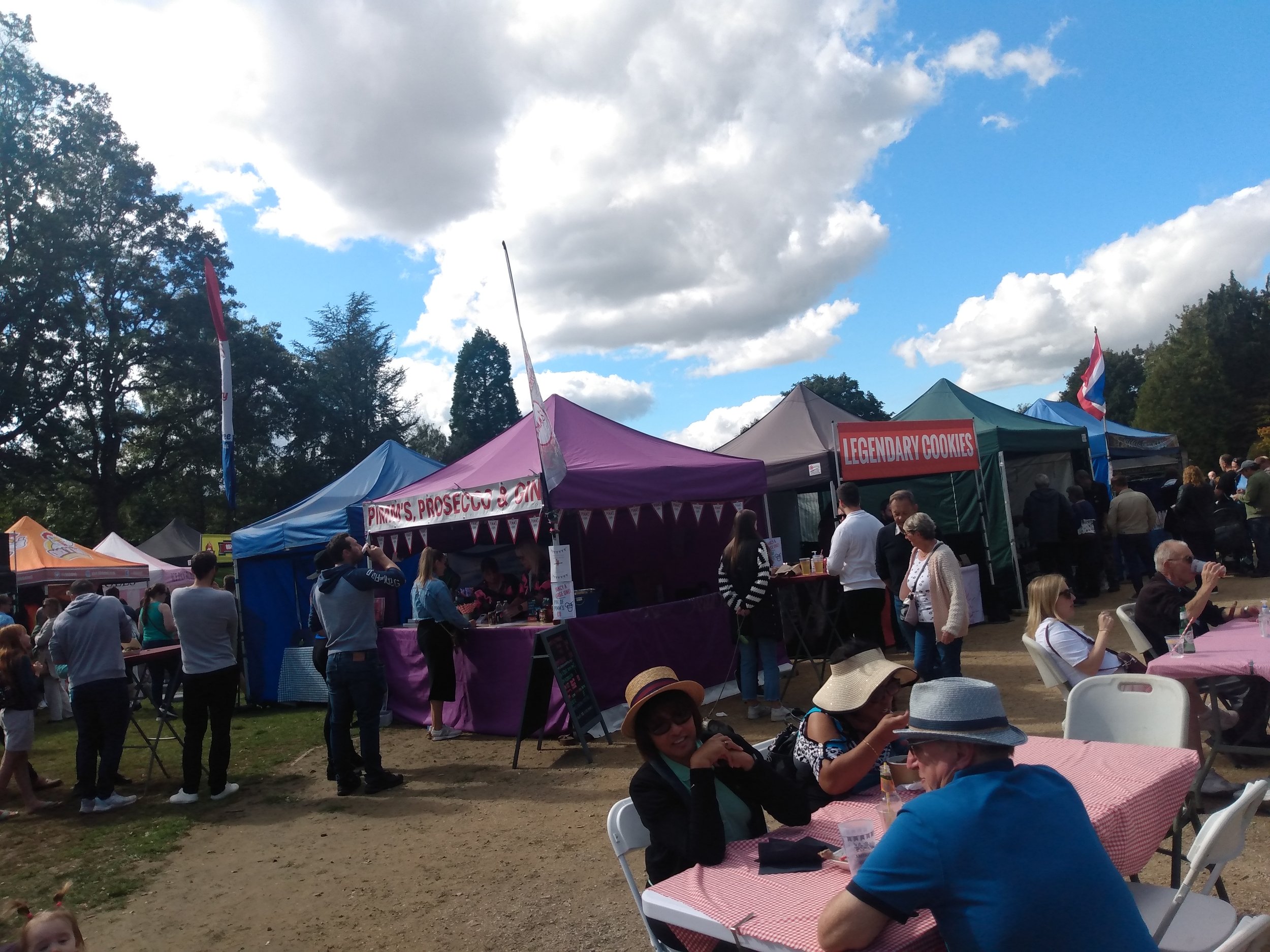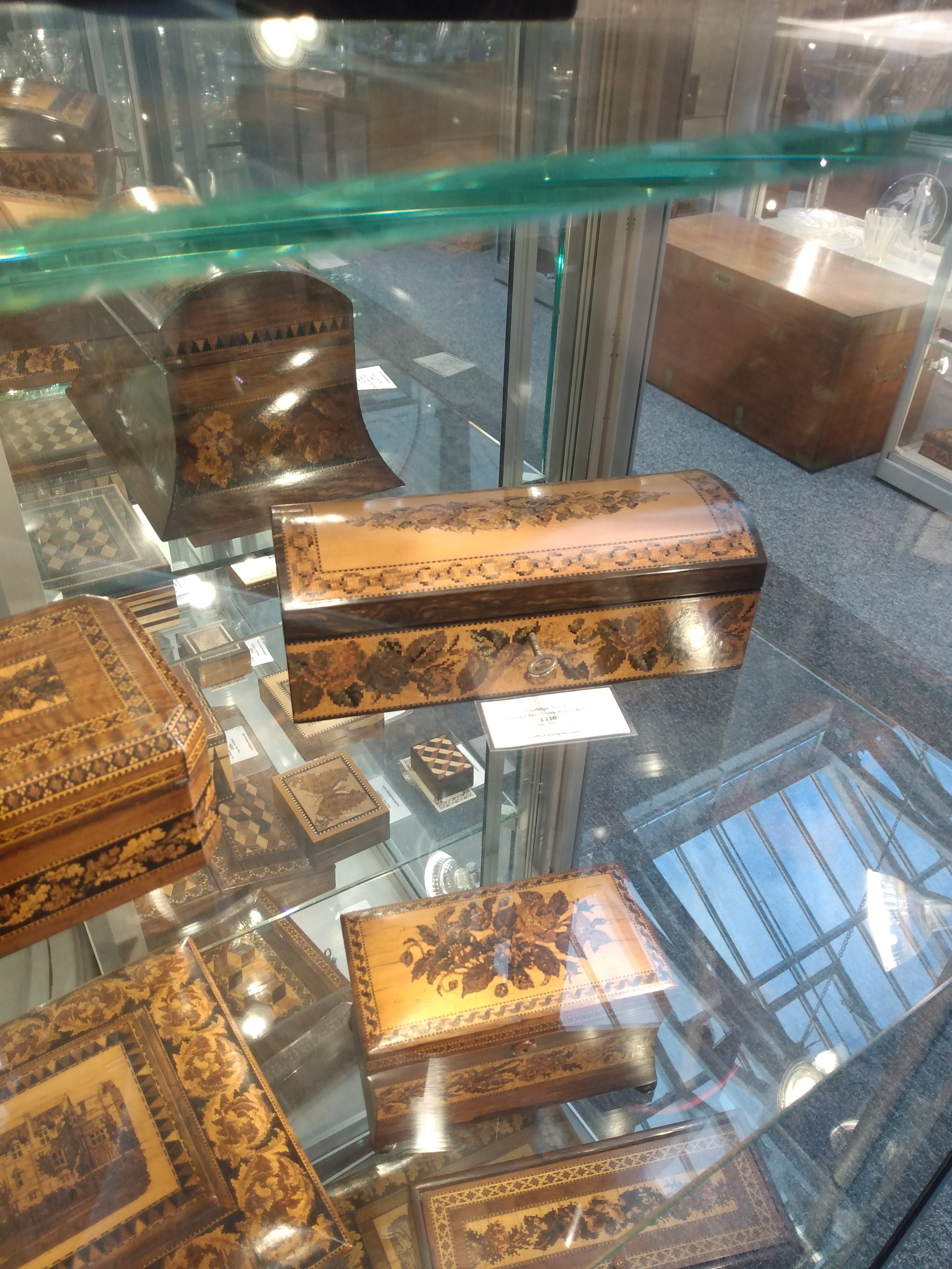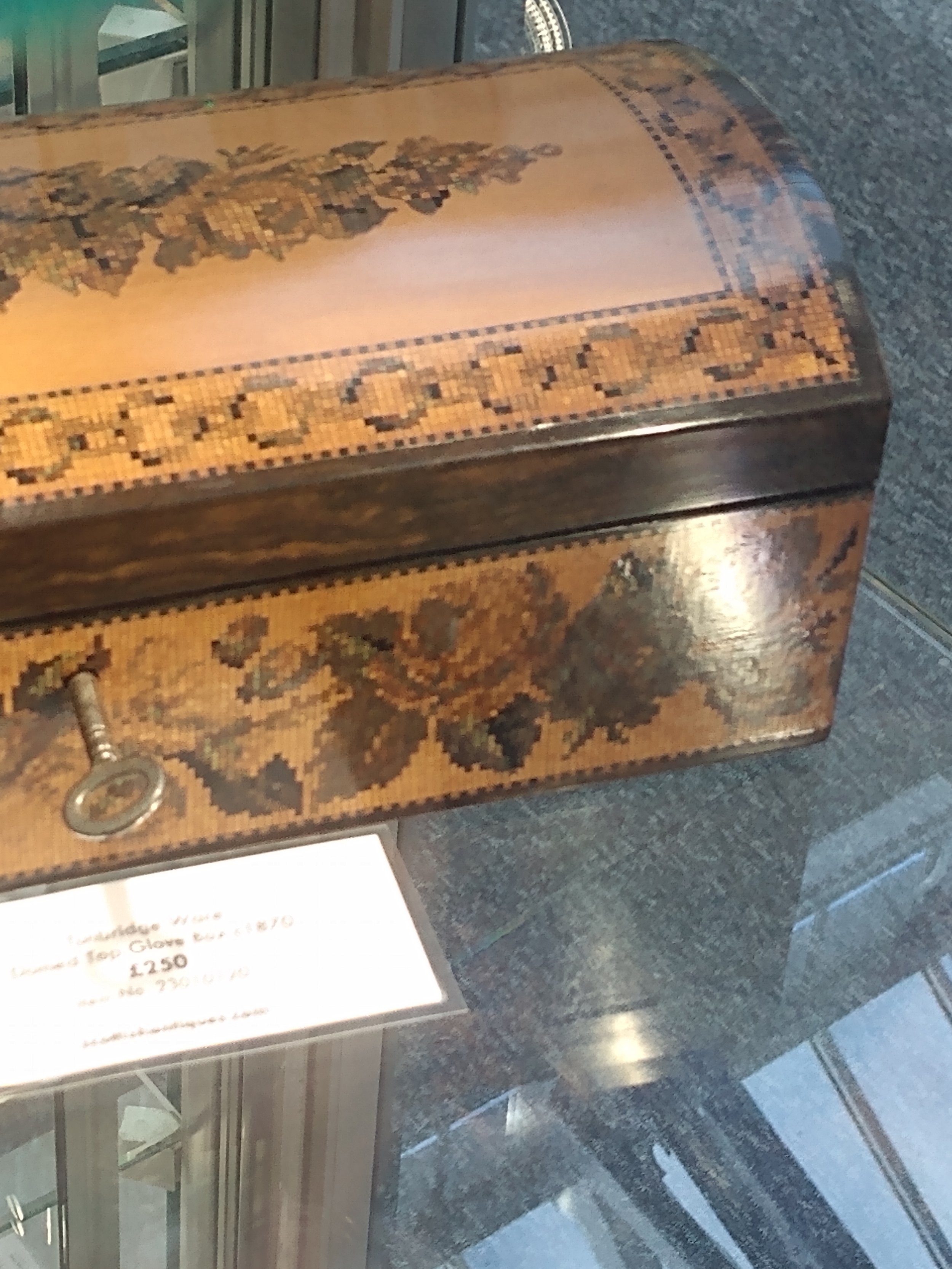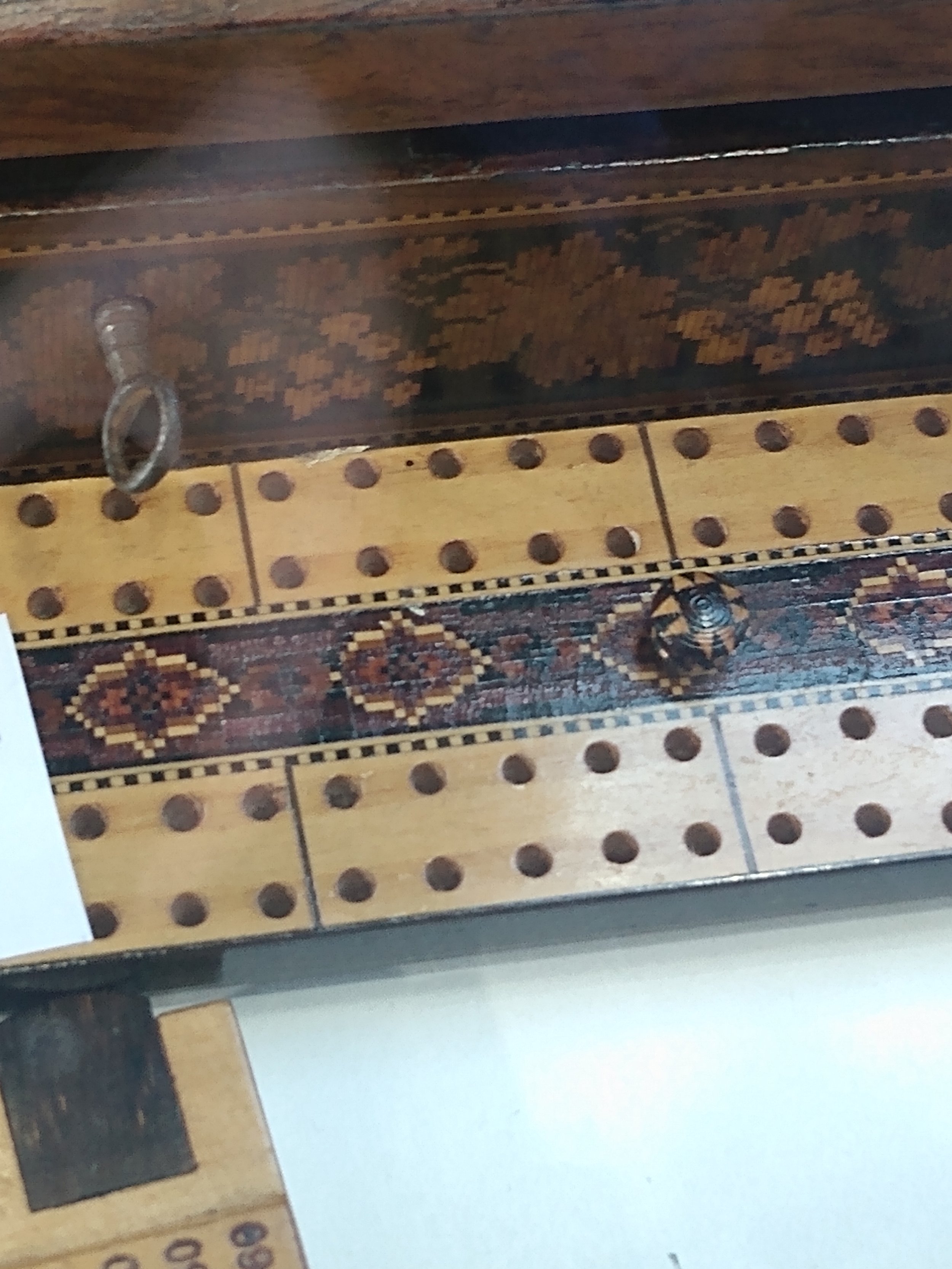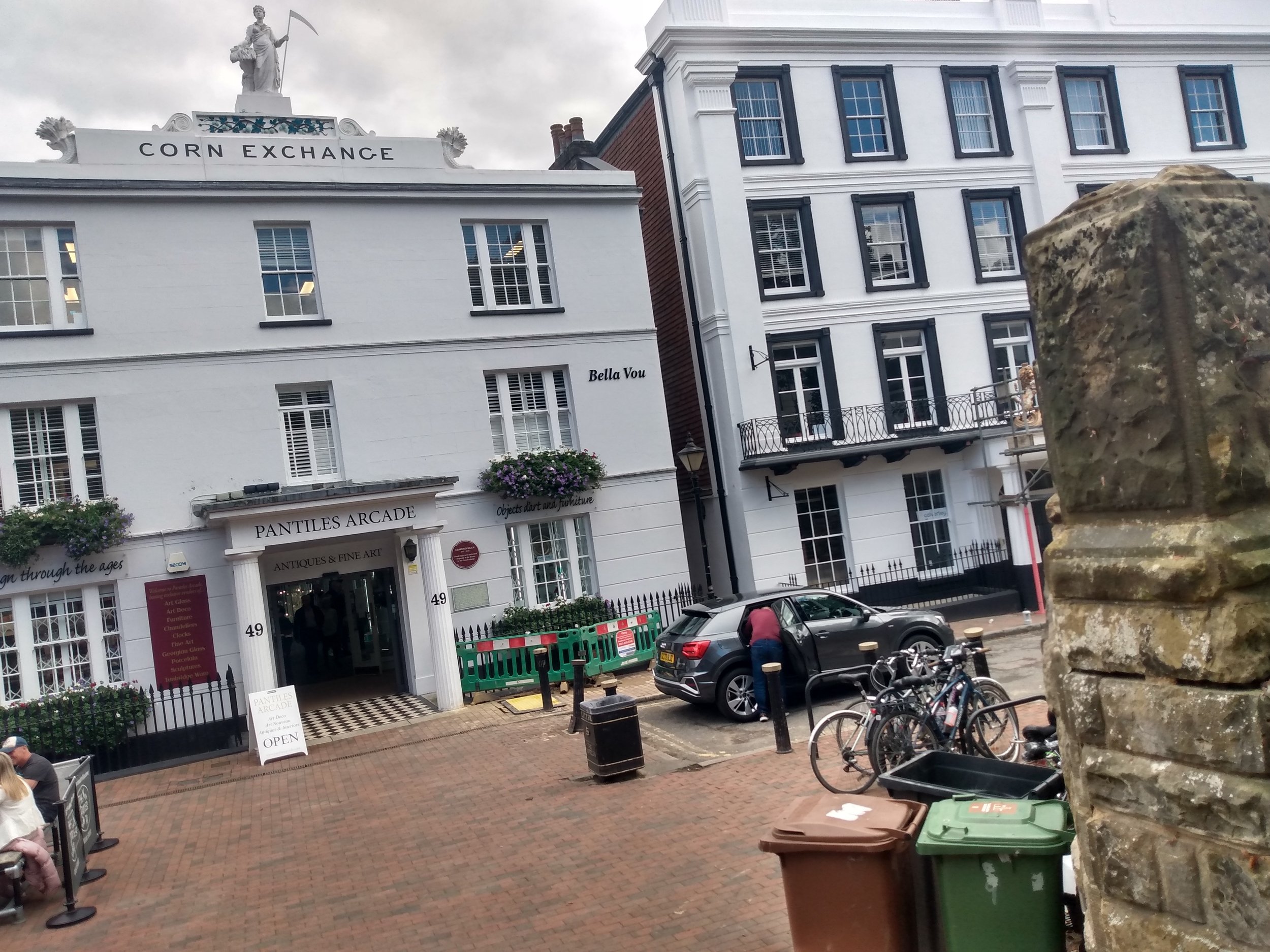An excellent example of Tunbridge Ware, displaying the typical autumn colours/theme
Recently, I discovered an old, forgotten, practically extinct craft called Tunbridge ware. I can’t remember the exact moment of discovery or how it came about, but I was immediately very excited about it and thought about how I could perhaps incorporate similar ideas into my own work.
Tunbridge ware is a type of marquetry. Marquetry is lots of tiny pieces of wood glue together, arranged to form a pattern or picture. In classical guitar making, we make our own rosettes with mosaic marquetry, often depicting floral or geometric patterns, and we also create patterns such as herringbone. Often there is marquetry on the tie block on the bridge, and occasionally on the headstock and back strip. Marquetry is time consuming and needs to be tastefully done. Although the aesthetic restrictions of the guitar seem free when compared to the violin world, there are actually quite strict limits of what is acceptable in terms of dimensions and decoration on a classical guitar. It also seems that too much effort into the decoration of a guitar can indicate that the maker may have lost sight of the what is actually most important in guitar, ie. sound, playability etc.
Back to Tunbridge ware; this is a type of marquetry which I gather was developed around the area of Tonbridge, in the 19th Century. Numerous workshops made boxes such as writing boxes, tea caddies, small pieces of furniture etc. made of fine exotic wood and decorated with incredibly elaborate marquetry. These were usually floral patterns, often in autumn colours as they didn’t dye their veneers so only had various shades of brown, black and white to work with. The patterns are often quite striking looking, quite Victorian, and from what I gather were inspired/copied from another craft called Berlin Wool Work. As a craftsman, I have found it interesting reading about how both these arts flourished and eventually died, and about the careers of the Tunbridge ware makers.
What is interesting about Tunbridge Ware is the size of the marquetry patterns. Marquetry in guitar making is already time consuming, but a normal mosaic for a guitar rosette might be 12 little pieces of wood by 12, very small, and this then repeats over and over. A Tunbridge Ware pattern that I am studying now, in comparison, might be around 40 x 200. When I look at a Tunbridge ware piece, I can see the sheer amount of work gone into it; I would actually be interested to know what it's like to look at Tunbridge ware without that knowledge.
Curious about this lost craft, I visited Tunbridge Wells to see some of this marquetry in real life.Travelling with a friend, I had some trepidation that the marquetry in person would be quite anti climatic. But luckily, upon leaving the train station and walking in the complete wrong direction, we stumbled across a food festival, which meant the trip was worth it either way. We then travelled to a beautiful antiques shop called The Pantilles, where I could behold Tunbridge ware for the first time. They had many brilliant examples and I wasn’t disappointed. In person, I could finally see the size of each individual piece of marquetry, which was 1mm, compared to the 0.5/0.6mm used in guitar making. I was also able to talk briefly with Eric Knowles ‘The Hoard’ who is a top British antiquarian
I next stopped off at the main museum in Tunbridge Wells. Downstairs they had an example of Tunbridge ware that had at some point in recent times been refinished in high gloss French polish. It was lovely to see an example of how these pieces would have looked when new. Upstairs was a display which actually included some old style of guitar, and if I recall correctly, the fretboard was elaborately decorated with Tunbridge ware marquetry. However, the real treasure and culmination of my trip was a video, an interview with a real living, Tunbridge ware maker. I had thought the art was dead, but the video shows the maker's workshop, his thoughts and his methods. There was a brilliant shot of some graph paper completely covered in mad symbols and numbers, where in each square he had detailed which colour of veneer would be used for the huge pattern he was creating. The maker’s name was Peter Benjamin, and upon doing some research when I returned from the trip, it appears he is no longer active, perhaps retired. Perhaps there are other makers practising the art too. Certainly, that was a good trip and has inspired me to do some further research into Tunbridge ware and perhaps incorporate some of this old craft into my work.
I must say Tunbridge ware has completely expanded my mind as to what I though was achievable with marquetry.




